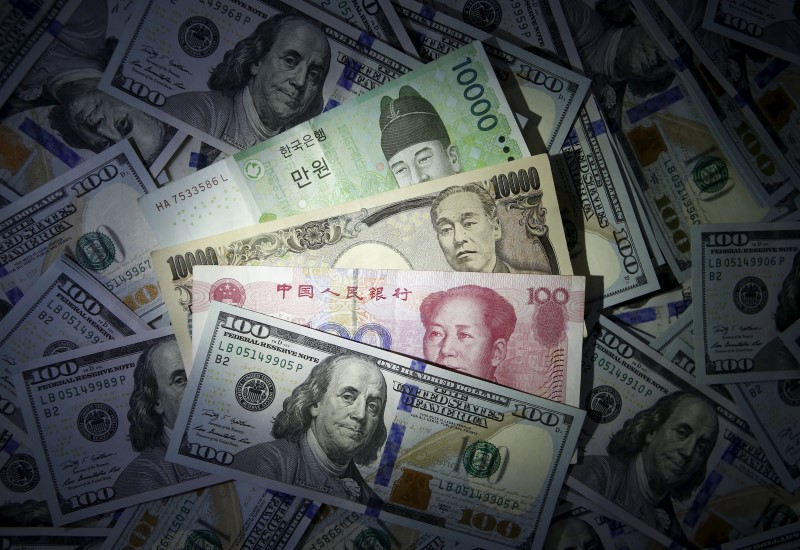By Dion Rabouin
NEW YORK (Reuters) – The U.S. dollar fell on Wednesday as risk appetite receded after big moves earlier in the week and following the Bank of Canada’s decision to hold interest rates steady, which may provide clues about future central bank action. The dollar slipped against the low-yielding euro and traditionally safe-haven Swiss franc and Japanese yen, which recorded its biggest two-day loss against the dollar in nearly two years on Monday and Tuesday. Since the start of the week, the yen had tumbled 4 percent against the dollar – its worst performance since November 2014 – after Japanese Prime Minister Shinzo Abe’s ruling coalition won a clear victory in upper house elections, fuelling expectations of more fiscal stimulus measures. The dollar fell 0.3 percent against the yen on Wednesday to 104.39 yen. It hit a session low overnight of 103.95 yen shortly after Chief Cabinet Secretary Yoshihide Suga said Japan was not considering “helicopter money,” a policy in which governments give money directly to citizens to stimulate the economy. “In the last three weeks there’s been a lot of volatility in the currency markets for obvious reasons,” said Minh Trang, senior FX trader at SVB, in reference to the fallout from Britain’s vote to leave the European Union. “Now you’re getting a little bit more stability.”
Wednesday’s price action also moved the British pound lower against the greenback after rising nearly 2 percent on Tuesday.
Sterling fell 0.7 percent against the dollar to $1.3149.
Against the Swiss franc, the dollar fell 0.55 percent to 0.9833 franc. The euro rose 0.4 percent against the dollar to $1.1100.
The dollar index, which measures the dollar against a basket of major currencies, was down 0.2 percent at 96.250.
Analysts had widely expected policymakers to keep Canada’s main policy rate steady at 0.5 percent, but officials sounded a more hopeful-than-expected tone about the outlook for domestic growth, while still warning of possible fallout from events like the Brexit vote. The Canadian dollar hit its strongest level since July 7 against its U.S. counterpart, as some traders unwound already low bets that the Canadian central bank could cut rates this year. [CAD/]
Eyes will now turn to the Bank of England, which is largely expected to ease monetary policy at its meeting Thursday.
(Editing by Jeffrey Hodgson)
Dollar falls vs safe havens as risk appetite fades

By Dion Rabouin
















